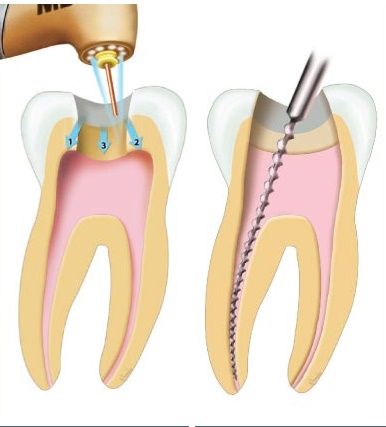
Symptoms that occur and indicate the need for root canal treatment are tooth sensitivity when eating too cold or hot food, pain when chewing on the tooth, tooth staining or constant pain.
Tooth devitalization (nerve removal) is considered the only "blind" maneuver in dental therapy and therefore requires special care and skill on the part of the dentist. Endodontic procedures are: cleaning of root canals, preparation and mechanical shaping of root canals and sterilization and obturation.
Root canal treatment prevents the infection from spreading to neighbouring teeth and prevents the destruction of the tooth where the infection has occurred. Depending on the number of teeth to be treated, root canal treatment can be carried out in one or more sessions. After removal of the nerve the canals will be filled (sealed) and the tooth will be saved. Some staining of the tooth may occur over time following this treatment but can be corrected by bleaching, veneering or crowning.
Tooth saving maintains space, prevents movement of other teeth and eliminates the need for a bridge or implant and crown. Although seemingly more expensive, it is actually a much more cost-effective treatment.
 RO
RO  EN
EN 